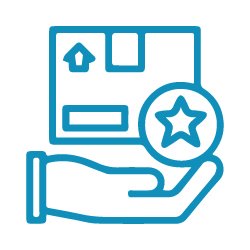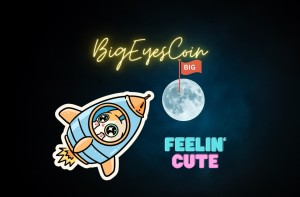Every project is different, and every marketing agency or marketing manager or CMO is different. The difference comes from how they handle the information, or when they handle it, but the discovery phase remains pretty much the same.
This article outlines the list of things you should have ready before trying to work with anyone from a marketing team – whether it’s an agency, a CMO, or a manager. They cannot help you in the best way without the information on this list. And if they do not require this information, then maybe you have the wrong person leading your marketing department.
Minds of marketers work the best when all information and data related to the project are shared ahead of time. They tend to absorb the information like a sponge and articulate possibilities in their mind as they figure out the best strategies, angles, concepts, directions, and implementation from the start till the end goal.
Consider it as a whiteboard of the marketer’s mind, or like the board in crime movies where they plot all the assets, suspects, their activities, and the missing pieces. Marketing is no different, just a different context.

So, without further ado, here is the list to get you started. Organize data in a Google document or something similar, with links to assets organized by folders in a Google Drive or data storage platform of choice.

1. Non Disclosure Agreement is a good place to start if it was not already signed during the contract signing stage. This protects you and your materials from leaks. Most importantly, a signed contract protects you from any lawsuit, from your investors or shareholders in the future.
When you raise funds or grow your user base and your business valuation skyrockets, you will definitely attract much attention. Yes, not all businesses are going to get there, but we do not start anything with a negative outlook, do we? Knowing in your heart that you are creating something great, something that the world would love to be a part of, let’s do it right from the first step.

2. Share all marketing/sales materials you have created thus far, irrespective of whether it’s good or bad, but as long as it’s relevant and accurate.
DO NOT DO: If there is something outdated or wrong, it’s better to weed it out at this stage before sharing to avoid confusion. Fixing something later may cost more time and money if already being used by different members of the marketing team.
MUST DO: When you share the materials at this stage, remember to mark information or files that are NOT to be shared in public. Beware of sharing information related to your pending patent application as competitors using the information may come up with a similar product. It’s always advisable to share more sensitive information to the public closer to the launch date of the product or token sale. It’s a fine balance. You cannot withhold essential information that users need to judge or evaluate your product. Similarly, you cannot give away everything either. It’s up to the discretion of the project’s founders to figure what can go out, when, and how much can be revealed.
While I personally believe in full transparency and open sharing of everything, whether it’s a code or strategy or a way of calculating something – an algorithm – I also believe that there is a time and place for everything to unfold.
Based on the trust you have with your agency/marketer, you can choose to share with specific labels to keep it private, or not share at all. That depends on where you are in your working relationship with them.
Here are some of the materials you can begin sharing:
- Landing pages
- Videos
- Articles
- PDFs
- The whitepaper, Litepaper, Technical Whitepaper, and the likes
- And any other material used towards the marketing/sales of the product.

3. Share any recommendations/appreciations or anything that can be used in the marketing process. These items are very essential, but PLEASE do not make them up. Be authentic. Be true. If there is none, so be it. We can collect it as we go with user feedback, beta trials, or even user interviews by sharing the gist with different industry experts to seek their thoughts or responses.
Community responses are all valid, but not if it was created by a writer. Following the shortcuts may appear easy, and lower in cost, but will lead to the project’s demise.
When sharing recommendations, be explicit on what can only be used in private presentations, or if everything can be displayed in public. Recommendations are meant to be used in public, but I understand there can be exceptions. Just make sure what’s private/public information is communicated clearly, and precisely.

4. Logo with source files and all formats are to be shared with the marketing team to create visuals and design assets of all types. They are essential for social media headers, social posts, and other Content Marketing materials like videos, slides, infographics, etc.
The most preferred formats are .ai or .psd. It’s a best practice to always provide all logo formats in terms of sizes, jpg/png/pdf, transparent and with black or white backgrounds, or any special backgrounds if the logo demands, black and white version, specific color versions that are allowed, icon separated and more. An apt designer would know everything that’s needed in this process, or you can easily find the list online for reference.
This will help avoid any misuse of the logos mostly, especially when someone in the marketing team tries to fit it in a specific dimension. If you are working with a fully-equipped agency, they would have their own designer to deal with these situations, but if it is an independent marketing manager, their skillset may not cover this.

5. Brand guidelines are an optional element to share here. Although I label it as optional, it is very vital for a brand. The logo files shared above provide the options and the groundwork, but brand guidelines clarify any ambiguity that might exist. This would not take a designer more than a few hours to put together, a simple task but saves more time than you might expect. Moreover, it’s just professional and expected for a brand to have it.

6. Cheatsheet of important points of value and selling points about the brand/product/team. This is one of the most important items or the #1 most required asset for a crypto marketing agency or a marketing manager. They can read through all your documents and your assets, interview, or speak with your team. They are trying to find the most important value and selling points, but you already know them at the top of your mind. You and your team should sit together and make a list from:
- Product Value
- Technical Superiority
- Existing plus points compared to the competition
- Specific team members and their values or skills that are immensely helpful for the project
- History of the brand or its experience that comes in handy
- Any certifications or 3rd party appraisals
Ideally, anything that is marketing worthy or sales-worthy, anything that can position the product better in the eyes of the users or investors can go here. Keep them short, to the point, as bullets. This is not the place to write a whitepaper or essay.

7. Any existing articles or content that has been produced so far by the team in any format – article, audio, video, interview, case study, social media content, etc. This inventory is the starting point of input for the marketing team to carry forward. Of course, if the inventory is of subpar quality, that’s fine. Your objective is to facilitate the process and give the marketing team inputs – not do their work.
Any qualified marketing manager or blockchain marketing agency can take the process forward from redesigning, editing the copy, repurposing to required formats, and distributing the content to all required platforms. But the initial spark from you can go a long way in speeding up the process. Moreover, the existing content you created is done by you, which ideally means the perspective, direction, and your vision are in it, the best source of inspiration than anything else. The more, the merrier. The marketing team can filter/edit and use inputs as appropriate.
For Content Marketing, the process involves all the above as well – from inventory collection, content creation, content repurposing, content syndication, content leverage, etc. Again, a process as comprehensive as this is only possible by large agencies. Depending on whom you work with, you may have to understand their specific process beforehand to ensure they do not use the information you provide as it is, which is not a good idea for any campaign, irrespective of its size.

8. Logins to all social accounts and platforms already created (if any). This is a place where mistakes happen quite often. One of the very first tasks after the discovery that a marketing team would do is to create all social and distribution channel accounts. Many times, founders would have already created 2-4 core channels when they initially started and if the business is in a mature phase, maybe even more.
When that’s not communicated to the marketing team, they would end up duplicating it. Of course, if they are smart enough, they would first check the links on the site. Then, they would check every platform to ensure an account does not exist before creating one. Why can’t we be similarly cautious?
Doubtless, providing this list to the marketing team and giving them access will help clear their path. You can enable them to go ahead and create everything else while improving the ones that are already there.
For Telegram, Facebook, Linkedin, YouTube, and the like, as allowed, you can add a user to be an admin or manager instead of sharing the logins; it’s safer and easier without having to depend on you for IP change verification or login authentication. For all other platforms, sharing the logins via LastPass or similar is advised. Sharing logins over chat or a document should be the last resort.
A marketing agency is usually expected to organize this information along with all logins created at their end in a private google sheet or LastPass as agreed upon. The master list will help keep all members of the project, marketing, or otherwise on the same track without multiple logins or changing passwords unilaterally.

9. Share access to Google Analytics, HotJar, Google TagManager, and other analytics accounts whichever has already been created using their email ID, not your own account’s login credentials. All such analytical platforms allow you to add other members to your team, and easily remove them later if needed.
If you have not created some or all of these, that’s fine. A marketing manager or marketing agency will do that for you and coordinate with your tech team to verify those integrations requiring DNS or file or meta verification to verify site ownership.
Few other accounts you can consider here on a case to case basis, include:
- Intercom
- Google Webmaster
- Bing Webmaster
- Helpdesk
- Beta Access to your platform
- …and more.
Ideally, a marketing team cannot function without clarity and data which provides them with the insight needed to evaluate their progress, growth, and results.
Caution: If you have not provided the necessary data, and if they have not created these, nor asked you for them in the first couple weeks of your engagement with them post-discovery phase, then it’s safe to assume that you are dealing with a wrong partner. Look for an alternative marketing team.

10. Provide data for all platform’s brand channel registrations. We live in a world with a lot of social media, many other platforms for videos, slides, audios, images, and more. We have dozens of such platforms from where our audience consumes information from. A qualified marketer would always aim for the brand’s visibility, reach, and maximum exposure. That will lead to the creation of brand channel accounts on various platforms.
Instead of letting the marketer or agency collect details from your website, better provide specifics to them upfront. Assumptions can derail the best plans.
Below are the basic details that the site’s registration process would require:
- First Name (Decide the member of the team whose identity is going to be used, but do not use a fake one)
- Last Name
- Date of Birth (It’s private, but sites do ask for it to ensure age limitations)
- Business Name (If you have multiple entities, make sure they have the right one)
- Address (And the address of the correct business entity to make sure it tallies)
- Timezone (To make sure when your team logins in, they see the timings in your timezone, not the marketing agencies – as this can lead to scheduling confusions)
- Logo Icon (You would have provided this in the earlier steps)
- Business Phone Number (Make sure someone picks this up if a user or investor decides to call)
- Website (If you have a main website and token sale site or product site, ensure the right one here is provided, whichever this marketing campaign is focused on)
- Category of Business (As a business can fall under multiple categories, its best to decide and provide guidance on this. Are you a technology company or a healthcare company, if you provide technology in healthcare?)
- Company Tagline (If one exists, else create an interesting tagline even if it is just for informational purposes. If you have an avenue to promote your business, why waste it?)
- Education, Language, Job Roles, and other miscellaneous fields may be asked for, but not all of them are a mandatory requirement and so you can request them to leave them blank.
A professional agency will always send you a form to fill with the details to ensure it’s collected. But if they do not, you now know what to do.

11. Share a gif or any video that shows how the process works. This is optional, a bonus item, but it’s very insightful and good to have for a marketing agency. You can share how your product works, or tokenomics in an animated form, or behind the scenes view of the team/office, or any “people element” that can build trust in this anonymous crypto world. Any shared bonus information is like a cherry on top.
There might be more needed as you continue working with your marketing agency, but this should be a solid foundation to build upon for a great jumpstart. A good agency will invite you with white-glove service and take care of all the above. If for some reason you are stuck with one who does not, you can take the lead and bring them up to speed.
It does not matter who does it, as long as the business goals are met and the project is a success. We cannot leave anything to chance as the real adventure comes after the onboarding and discovery phase of your marketing partner.
Go Win!
About The Author:
Mr. KEY – Karnika E. Yashwant has been an avid marketer leading blockchain projects since 2013 and executing Content Marketing for Fortune 100s since 2007. He is the CEO of Utopian Capital, an investment firm for blockchain technology, and the Founder of KEY Difference Media, an agency rated in numerous Top 5 and Top 10 lists in the Blockchain/Crypto space year after year. He can be reached at LinkedIn or Telegram.




